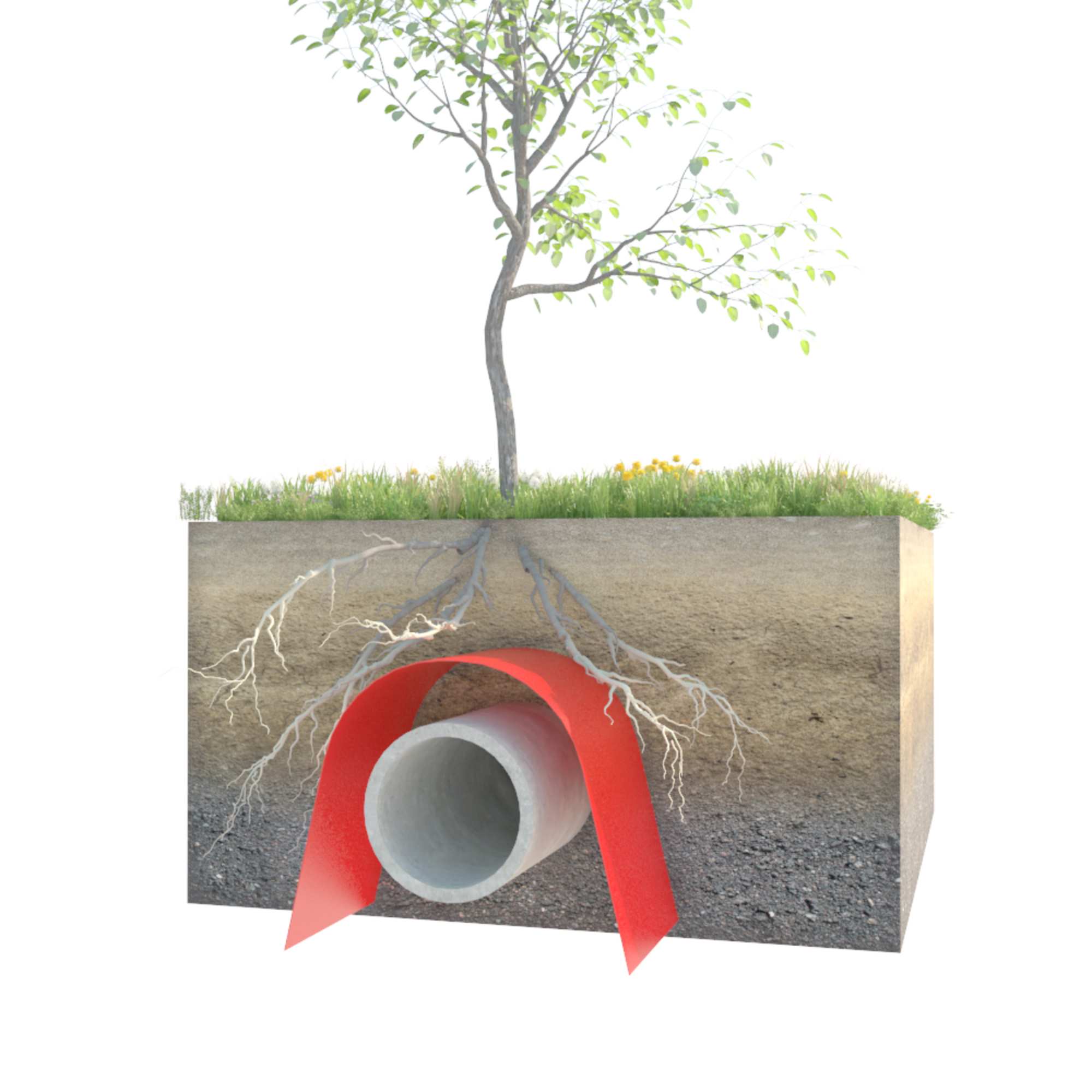Sympathetic use of Root Barriers in tree planting
To guide rather than constrict
We are often asked, what root barrier should we use? Or should we use a root barrier at all?
To understand whether a root barrier should be used or not, it is important to firstly consider a key feature of tree rooting systems.
With regards to trees one common misconception is that what is above ground is reflected below. In fact, for most UK tree species, 90% of the root growth is within the top 500mm of soil. It makes sense really, for as British Standards highlight, any deeper than 300mm most topsoil will start to become anaerobic. The roots therefore like plenty of uninhibited lateral space to spread out.
Take for example an average 16m3 tree pit for a ‘Medium’ class of tree, such as an Acer Campestre ‘Elsrijk’. The canopy after 25 years will be anything up to six metres in diameter. We can be confident that the roots will want to extend further than 3 metres from the centre each way. How can they do this if it’s planted in a 4m2 tree pit with impenetrable root barrier around all four sides?
What we end up with in so many cases, is the rooting system becoming constricted, halting healthy growth; and the trees never reaching their full potential.
Of course, close proximity to buildings or footpaths, and service lines, especially water and sewerage pipes, means we do need to gently deter, or guide the roots. This can be done by lining the tree pit or trench along the side where the paving or services lines are. You can also simply wrap the service line with root barrier. If there should be even the tiniest crack or loose joint in the piping of service lines, this will enable warmth and moisture to seep into the surrounding soil. Tree roots are attracted to this source of moisture, and in the case of sewer pipes, organic nutrients. Without protection from a root barrier, the fine hair-like roots will work their way into the crack or loose joint and carry on growing inside the pipe. As the roots grow, the crack in the pipe widens, more moisture seeps out and we have an ever-increasing problem; until finally the pipe is so full of roots and trapped debris that it becomes completely blocked and unusable.
Image c/o Waterman Plumbing Toronto. Blocked pipe
Occasionally, the root growth will be so much that it splits the pipe completely, leading to a total collapse, which results in huge disruption, and a lot of expense to fix.
Compared with the cost of an overall tree planting project, and certainly any potential repair work, Root barrier is a negligible cost investment.Here at Green-tech we offer a range of products for most applications:
gt260- a single-sided permeable barrier measuring 650 microns (0.65mm) thick. This allows water to pass through, but is impermeable to roots, making it an ideal all-round barrier.
gt325 – is a slightly heavier, but still very flexible 720 micron (0.72mm), fully impermeable barrier. The gt325 is ideal for protecting the newly planted tree roots from pollutants or acids that may be in the surrounding soil.
gt360 – very similar to 260, except that it is coated on both sides, making it sturdier at 710 microns (0.7mm), and ideal for keeping two types of trees or shrubs apart should they need to be moved at a future date.
gt420 UV –the heaviest of the standard root barriers at 780 microns (078mm) and also has an additional UV coating, so that it can be left partially above the surface. It is particularly effective against vigorous roots such as bamboo and reeds.
gt260 permeable rootbarrier
We also supply specialist products such as CuTex, specifically formulated to control Japanese Knotweed, Himalayan Balsam and other invasive species. CuTex features a copper foil encapsulated between polypropylene geo-textiles. The foil acts as a ‘signal’ layer, from which the roots avert their growth, acting as an impenetrable barrier to roots. The quantity of copper ions released are so miniscule that there is no affect on the eco-system or groundwater. It can be laid either vertically or horizontally.
If you need something even sturdier, gtRollRib is a tough 1.5mm thick, recyclable HDPE panel that features vertical ribs that guide roots downwards rather than turning in on themselves if space is limited. As with most things, although we would much rather see tree roots spreading out laterally, we appreciate that sometimes needs must.
Gt Rollrib
These are just a few of the products, most having a 25-year guarantee, that form part of urban tree planting programmes; where although we want to give the trees as much rooting volume as possible, to do this we may need to guide roots away from one area into another.
CPD Seminars are available to discuss this area in more detail.Email info@green-tech.co.uk

